Beaver Builder and Elementor are two of the most popular WordPress page builders on the market. Both offer free versions with a good range of features, but there are some key differences to be aware of before choosing which one is right for you.
User interface
Beaver Builder has a simpler and more streamlined user interface than Elementor. This makes it a good choice for beginners who are new to WordPress page builders. Elementor has a more complex interface, but it is still relatively easy to learn.
Free features
The free version of Beaver Builder includes a good range of features, including:
- Drag-and-drop page builder
- 30+ pre-made templates
- 30+ content modules
- Row and column layouts
- Custom CSS and JavaScript support
The free version of Elementor includes even more features, including:
- Drag-and-drop page builder
- 300+ pre-made templates
- 60+ content modules
- Row and column layouts
- Custom CSS and JavaScript support
- Popup builder
- Form builder
- WooCommerce integration
Customization options
Beaver Builder is more developer-friendly than Elementor. It offers more customization options, including the ability to add custom code to your pages. Elementor is still relatively customizable, but it is not as developer-friendly as Beaver Builder.
Template library
Elementor has a much larger template library than Beaver Builder. This makes it a good choice for users who want to create a professional-looking website without having to start from scratch.
Unique features
Beaver Builder has a few unique features, including:
- White labeling: You can place your company name and logo instead of Beaver Builder’s on the site’s back-end.
- Front-end user access: You can give users access to the front-end editor, so they can make changes to their own pages without having to log into the WordPress dashboard.
Elementor also has a few unique features, including:
- Motion effects: You can add motion effects to your elements, such as fade in and fade out animations.
- Global widgets: You can create global widgets that can be reused on any page on your website.
Which free page builder should you choose?
If you are a beginner, Beaver Builder is a good choice because of its simpler user interface. If you need more features and customization options, Elementor is a better choice. If you are a developer, Beaver Builder is the better choice because of its developer-friendly features.
Here is a table that summarizes the key differences between Beaver Builder and Elementor:
| Feature | Beaver Builder | Elementor |
|---|---|---|
| User interface | Simpler and more streamlined | More complex, but still relatively easy to learn |
| Free features | Good range of features, including drag-and-drop page builder, pre-made templates, content modules, row and column layouts, and custom CSS and JavaScript support | Even more features, including drag-and-drop page builder, pre-made templates, content modules, row and column layouts, custom CSS and JavaScript support, popup builder, form builder, and WooCommerce integration |
| Customization options | More developer-friendly | Less developer-friendly |
| Template library | Smaller | Larger |
| Unique features | White labeling and front-end user access | Motion effects and global widgets |
Best for
- Beaver Builder: Beginners, developers, and users who need more customization options
- Elementor: Users who need more features and a larger template library
Ultimately, the best way to decide which page builder is right for you is to try both of them out and see which one you prefer.
1. Beaver Builder
These are pretty much the same for both Elementor and Beaver Builder, except for the inline text editing capability, which is only available in Elementor. So, in terms of intuitiveness and user-friendliness, both page builders have high standards and are very easy to use.
When you create a page on WordPress from scratch with Elementor, you drag and drop specific elements, section by section, until you finish it. You can use the default elements that each page builder comes with, such as the title, text element, and more.
![Beaver Builder vs Elementor 2.0 Free Page Builders Compared [2020]](https://gplfreetheme.com/wp-content/uploads/2020/08/Beaver-Builder-1024x451.jpg)
In the pro version of Elementor, you can drag over a premium pricing element, for example. The free version of Elementor gives you 45 drag-and-drop items to build custom pages and posts, while Beaver Builder gives you less. Starting with version 2.0, Elementor gives you even more ready-made content pieces to play with, like blocks, which you can use to create custom page sections by section, like this. You can create headers and footers too, but these templates are only available for pro users. Keep in mind that you can extend the number of available elements with plugins for both page builders.
Here is a video I recommend you watch to see seven of the top-rated add-ons for Elementor. For example, if you install and activate the Orbit Fox WordPress plugin, you can create a contact page, an about us page, and a pricing plans page with just a couple of clicks. You can start with the default content and then customize it for your own needs. If you want to see more videos, please hit the like button below, subscribe, and tap the bell to get notified every time we upload a new video.
In addition, there are many unofficial plugins that come with additional features and elements for each page builder. You can find these plugins in the WordPress repository on your dashboard with a simple search related to the name of that specific page builder. The only limit here is your imagination. Both page builders in this video have a lot of custom capabilities available, and you can transform any element into something unique. For example, you can change the background of an element using solid colors, gradients, and images. You can also set a video background for some elements.
The title and text elements have almost everything you need to make them look great and unique. If you want to deliver the best mobile experience ever, you can slightly adjust the content to perfectly fit any screen size with Elementor. So, both page builders have a lot of options you can use to customize your content, and because of that, it’s hard for me to pick a winner. My favorite is Elementor, but you can decide for yourself until the end of this video, so keep watching.
To cut things short and build basic websites fast, each page builder comes with pre-made templates you can use to create content with a single push of a button.
2. Elementor
The winner here is Elementor by far, because of its 100+ templates available in the pro version. Do you remember the Orbit Fox WordPress plugin mentioned earlier? That plugin also has some unique ready-made templates that you can use instantly after clicking the import button. The team behind this plugin is working hard to create more templates that you will be able to use for free, right after installing it on your dashboard. With the free version of Elementor, for example, you can, you can create shape dividers above and below every section for a better visual experience. The animated text element in the pro version of this plugin will make your page more dynamic. Create shape dividers above and below every section for a better visual experience, and the animated text element in the pro version of this plugin will make your page more dynamic. Considering only these two things, your WordPress website will stand out for sure!
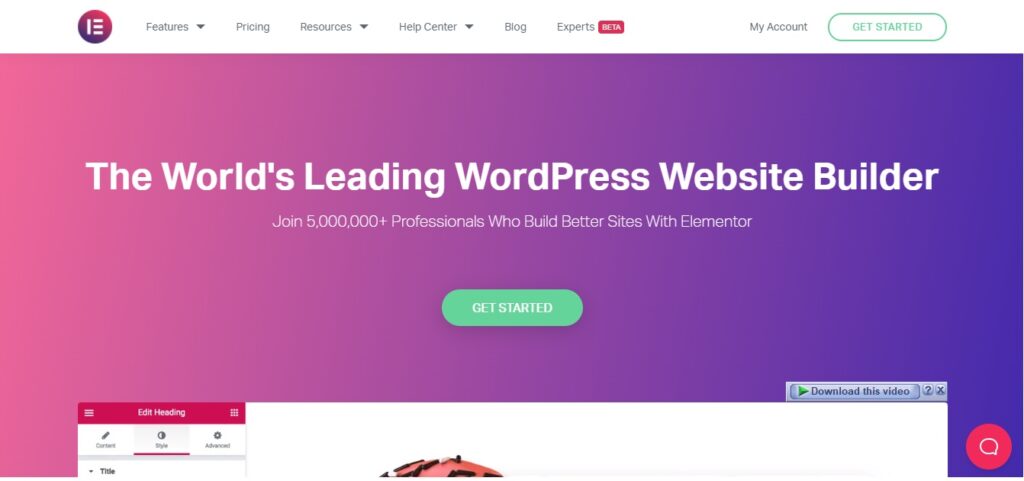
The maintenance/coming soon mode of Elementor is another unique feature that you can turn on right from its interface. One of Beaver Builder’s unique features is the recently released Beaver Theme add-on. This add-on is a separate purchase, but it essentially lets you use the same Beaver Builder interface to build your entire theme, including headers, single post layouts, and more.
If you love free things, as I do, you’ll be happy to know that both Elementor and Beaver Builder have free versions, which you can install right from the WordPress repository on your dashboard. And if you want to add some premium elements, Elementor PRO starts at $49 for a license that you can use on one site, with updates and support for one year starting the day of your purchase.
Beaver Builder starts at $99 for the premium version, which gives you access to all its premium modules and templates on unlimited sites, as well as world-class support for one full year. Beaver Builder is the less well-known of the two, with over 500K active users, but it’s compatible with almost any WordPress theme. Elementor is the more popular choice, with over 600K users, and both page builders are growing rapidly. I’m sure the numbers we see in a year from now will be even more impressive.
My favorite page builder is Elementor, because of its many free features that are updated regularly. The number of ready-made page templates in the library and the ability to import custom templates are also things that convinced me to use it every day. But ultimately, the best page builder for you will depend on your own needs. Please share your thoughts in the comments section below, and if you want to learn more about WordPress, check out these resources.
- How to Add a Reading Scroll Progress Bar to Your WordPress Site (Without a Plugin)

- Fix Your Missing H1 Tags in WordPress: A Beginner’s Guide to SEO Improvement

- The Easiest Way to Add Sticky Footer Ads on WordPress & Blogger in 2024

- How to Make Entire Block Clickable in GeneratePress?

- How to Make Last Widget Sticky in GeneratePress Theme [2024]

- How to Add a Sticky Mobile Footer Ad in GeneratePress (2024)

- How to Switch your WordPress Theme to GeneratePress in 2024
![How to Switch your WordPress Theme to GeneratePress [2024]](data:image/svg+xml;base64,PHN2ZyB4bWxucz0iaHR0cDovL3d3dy53My5vcmcvMjAwMC9zdmciIHdpZHRoPSIzMDAiIGhlaWdodD0iMTY5IiB2aWV3Qm94PSIwIDAgMzAwIDE2OSI+PHJlY3Qgd2lkdGg9IjEwMCUiIGhlaWdodD0iMTAwJSIgc3R5bGU9ImZpbGw6I2ZmZmZmZjtmaWxsLW9wYWNpdHk6IDAuMTsiLz48L3N2Zz4=)
- How to Create a Sticky Floating Sidebar in Astra Theme (2024 Tutorial)

- How to Make Sidebar Sticky in Kadence Theme? [2024]
![How to Make Sidebar Sticky in Kadence Theme [2024]](data:image/svg+xml;base64,PHN2ZyB4bWxucz0iaHR0cDovL3d3dy53My5vcmcvMjAwMC9zdmciIHdpZHRoPSIzMDAiIGhlaWdodD0iMTY5IiB2aWV3Qm94PSIwIDAgMzAwIDE2OSI+PHJlY3Qgd2lkdGg9IjEwMCUiIGhlaWdodD0iMTAwJSIgc3R5bGU9ImZpbGw6I2ZmZmZmZjtmaWxsLW9wYWNpdHk6IDAuMTsiLz48L3N2Zz4=)
![Beaver Builder vs Elementor 2.0 Free Page Builders Compared [2020]](https://gplfreetheme.com/wp-content/uploads/2020/08/Beaver-Builder-vs-Elementor-2.0-Free-Page-Builders-Compared-2020.jpg)
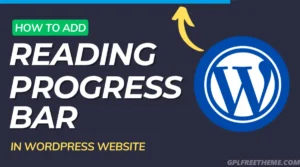
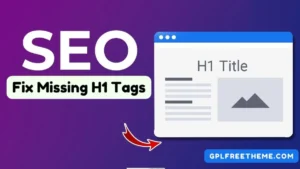
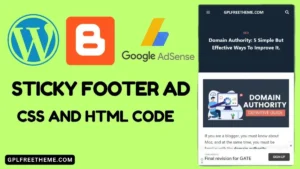
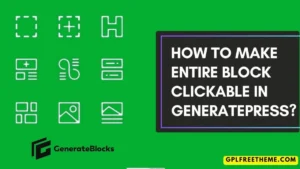
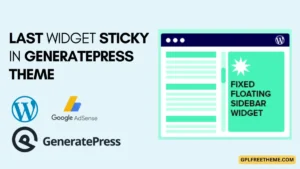
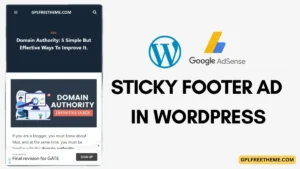
![How to Switch your WordPress Theme to GeneratePress [2024]](https://gplfreetheme.com/wp-content/uploads/2024/01/How-to-Switch-your-WordPress-Theme-to-GeneratePress-2024-2-300x169.webp)

![How to Make Sidebar Sticky in Kadence Theme [2024]](https://gplfreetheme.com/wp-content/uploads/2024/01/How-to-Make-Sidebar-Sticky-in-Kadence-Theme-2024-300x169.webp)